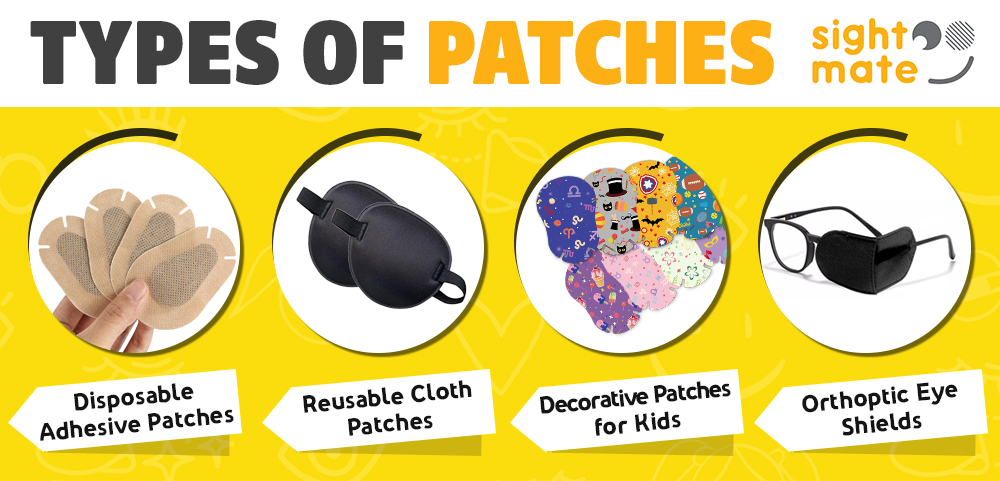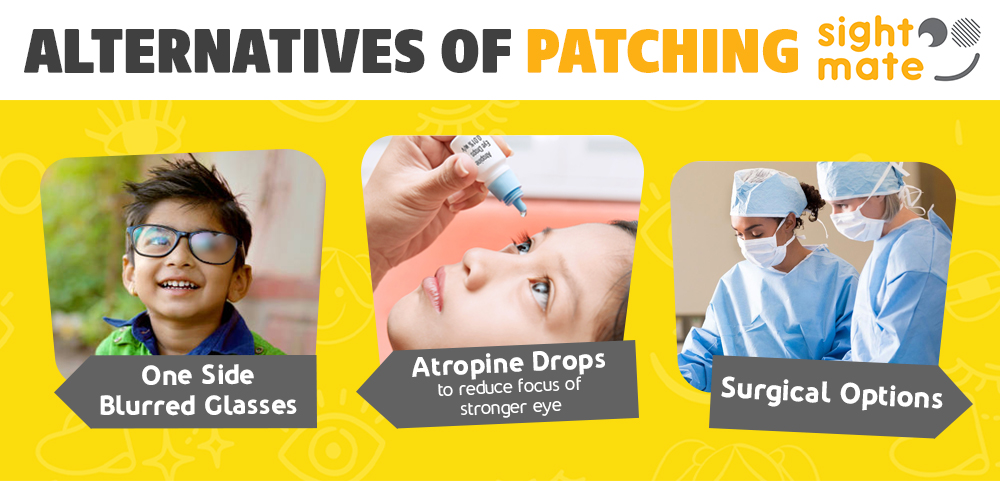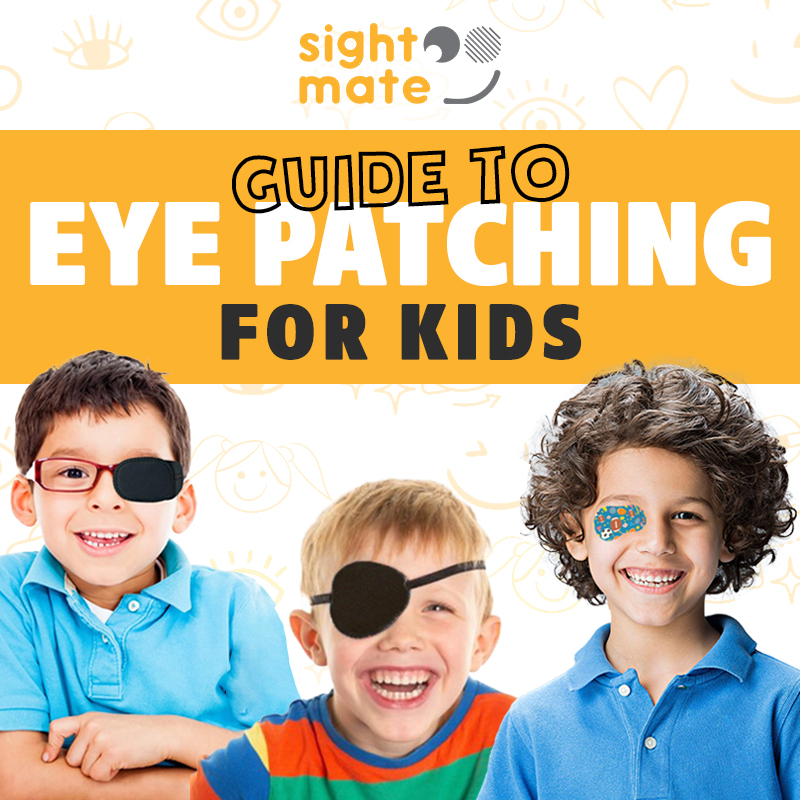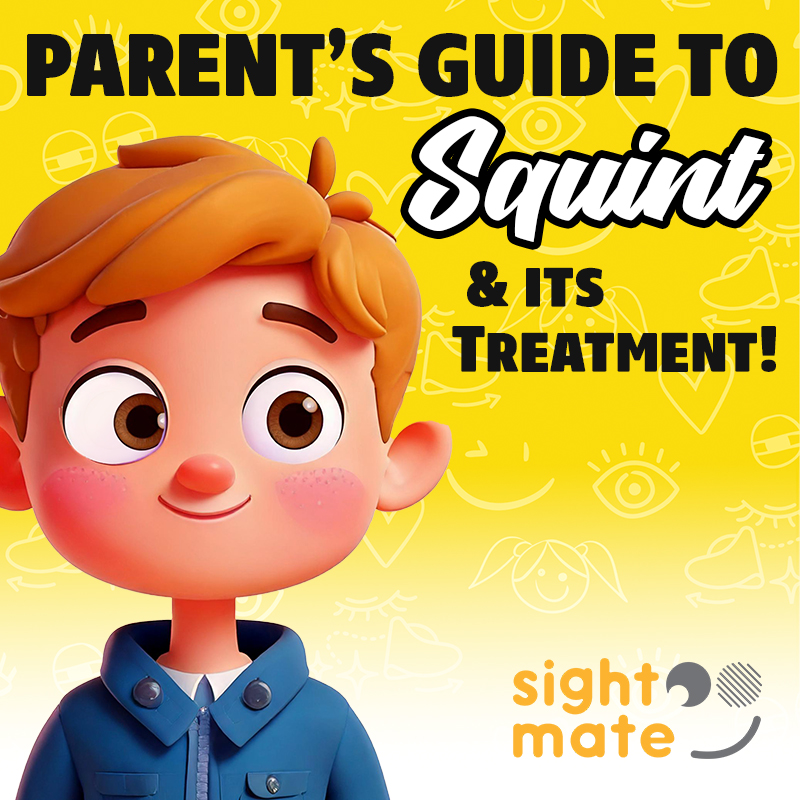Eye patching is a simple yet powerful tool in vision therapy, especially for treating conditions like amblyopia (lazy eye) and strabismus commonly known as cross eye or squint . This blog provides a comprehensive overview of Amblyopia eye patch from its benefits and techniques to tips for ensuring success. Whether you’re a parent helping your child or an adult exploring vision correction options, this guide will walk you through everything you need to know about eye patching.
What is Eye Patching?
Eye patching is a therapeutic method used to treat certain vision problems by covering the stronger eye to stimulate the weaker one. This forces the brain to rely on the weaker eye, strengthening its visual capabilities over time. Eye patches are effectively used for conditions like amblyopia (“lazy eye”), squint eye treatment and strabismus (“crossed eyes”). Historically, eye patching has been a cornerstone of vision therapy, and modern advancements have made the process more effective and comfortable.
The science behind eye patching lies in neuroplasticity—the brain’s ability to adapt and rewire itself. By patching the stronger eye, the brain is encouraged to focus on signals from the weaker eye, improving its function over time. This therapy is most effective in children due to their developing visual systems but can also benefit adults in specific cases.
- Strengthens vision in the weaker eye.
- Helps correct misalignment or imbalance in vision.
- Prevents long-term vision problems when applied early.
To maximize the benefits of eye patching, it’s crucial to choose the right type of eye patch. A well-suited patch ensures comfort and effectiveness, making the process easier for both the wearer and their caregivers.
Types of Kids Eye Patches
Eye patches come in various forms to suit different needs and preferences. Each type has unique advantages, allowing parents and caregivers to select what works best for their child’s needs:
Disposable Adhesive Patches
- These single-use patches stick directly to the skin around the eye and are lightweight.
- These are regular patches and can also be used by the children
- Available in hypoallergenic materials to reduce the risk of irritation.
- Cons: Come in a single color white or gray ~ Kids are not much excited in using them.
Reusable Cloth Patches
- Often secured with a strap or fitted over glasses, these are eco-friendly and economical.
- Available in a variety of colors and designs, making them appealing for long-term use.
- Easy to wash and maintain for repeated use.
- Cons: Younger children tend to remove them easily as these patches irritate during longer duration use.
Orthoptic Eye Shields:
- Made of hard plastic or fabric, these are worn over glasses for children with sensitive skin.
- Provides ample room for airflow and comfort.
- Cons: As these are worn on glasses frame, so they are not every effective/useable as they do not provide complete coverage.
Decorative Patches for Kids:
- Designed with fun patterns, cartoon characters, or bright colors.
- Helps children feel excited about wearing the patch, reducing resistance.
- Hypoallergenic and highly effective; these are the kids oriented version of standard adhesive patches
- Cons: Expensive, previously they used to cost on average PKR 500/- per patch till December 2024. With the launch of SightMate’s Kids Eye Patches for Lazy Eye, the prices have come down significantly.

Our Recommendation:
- Kids: Decorative Hypoallergenic Adhesive Eye Patches
- Adults: Disporable Adhesive Patches
When choosing an eye patch, consider factors like comfort, material, durability, and skin sensitivity. Combining a suitable patch with engaging activities can make patching less of a chore and more of a fun experience.
How to Use an Eye Patch
Using an eye patch effectively requires consistency, proper technique, and integration into daily routines. Here’s how to ensure the best outcomes:
1. Prepare the Patch
- Make sure the patch is clean and undamaged before each use.
- For adhesive patches, gently cleanse the skin around the eye to ensure a proper seal without irritation.
- If using a reusable patch, adjust straps or position it over glasses to achieve a snug fit.
2. Set a Schedule
- Consult your eye doctor to determine the appropriate duration for patching. This often ranges from 2-6 hours daily, depending on the severity of the condition. Follow the instructions of your opthamologist.
- Gradually introduce patching into your child’s routine to help them adapt.
- Use a timer or visual chart to track daily patching times and celebrate milestones.
3. Engage the Weaker Eye
Encourage activties that require focus, such as:
- Reading: Age-appropriate books or other school work.
- Games: Puzzles, memory games, or vision-enhancing apps designed for children.
- Creative Tasks: Drawing, coloring, or crafting projects.
>> Avoid passive activities like watching TV, as these don’t fully engage the weaker eye.
4. Monitor Progress
- Observe your child during patching to ensure they are comfortable and actively using their weaker eye.
- Maintain regular follow-ups with your eye care professional to assess progress and adjust the treatment plan as needed.
By linking patching time with fun and meaningful activities, children are more likely to cooperate, improving the therapy’s effectiveness. Proper planning and consistent practice can make all the difference in achieving successful outcomes.
Tips for Parents
Supporting a child through eye patching therapy requires patience, encouragement, and consistency. Parents play a crucial role in ensuring their child follows the prescribed patching routine and remains motivated throughout the process.
- Stay Positive: A positive attitude from parents can help children accept eye patching as part of their daily routine. Celebrate small achievements and encourage them with words of affirmation.
- Be Consistent: Follow the prescribed schedule diligently. Skipping patching sessions can slow down progress and affect the treatment outcome.
- Track Progress: Keeping a log of patching hours and any visible improvements can help parents stay motivated and provide valuable insights for follow-up visits with the doctor.
- Build a Support System: Connect with other parents in similar situations through SightMate’s Facebook Community, other online forums, support groups, or social media communities. Sharing experiences can provide reassurance and practical advice.
- Make It Fun: Turn patching time into a game or a challenge with rewards for completing daily goals.
By staying engaged in the patching process, parents can help make the experience smoother and more effective for their child. If patching proves too challenging, alternative treatments may be considered to complement or replace eye patching.
Alternatives to Eye Patching
While eye patching remains a widely recommended treatment, some parents and doctors may explore alternative therapies to achieve similar results.
- Vision Therapy Exercises: Supervised exercises designed to strengthen the weaker eye and improve coordination can be effective for some cases.
- Atropine Drops: A medically prescribed eye drop can blur the vision in the stronger eye, forcing the weaker eye to work harder. This option is sometimes recommended for children who struggle with wearing an eye patch. Beaware that at times, this result in reduction in vision of stronger eye.
- Surgical Options: In severe cases, surgery may be required to correct eye alignment issues. This is usually considered when non-invasive treatments fail to provide significant improvement.
- Specialized Glasses: Some optometrists recommend glasses with filters or occlusion lenses that provide similar benefits to patching.

Consulting an eye care professional is essential before choosing an alternative approach, as not all treatments work effectively for every individual. Selecting the right eye patch is the first step to ensuring a smooth treatment process.
Choosing the Right Eye Patch
The effectiveness of eye patching largely depends on selecting a patch that is comfortable, durable, and suitable for the child’s needs.
- Material: Look for breathable, skin-friendly materials, especially if your child has sensitive skin. Hypoallergenic patches can help prevent irritation.
- Size and Fit: Ensure the patch completely covers the stronger eye without gaps. A loose fit does not prevents peeking, which can reduce the effectiveness of the treatment.
- Design: Fun patterns and vibrant colors can make eye patching more enjoyable for children. Letting kids choose their own patches can encourage compliance.
- Type of Patch: Consider whether an adhesive patch, reusable fabric patch, or orthoptic eye shield is the best option based on the child’s preferences and medical recommendations.
For parents seeking a high-quality, reliable eye patch solution, SightMate eye patches provide an excellent option. Designed with both comfort and effectiveness in mind, SightMate patches cater to children and adults alike, ensuring a stress-free patching experience.
SightMate’s imported eye patches make patching a comfortable and enjoyable experience. The patches come in fun and colorful patterns with seperate designs for boys and girls. They are made up of soft, hypoallergenic, latex-free, non-irritating fabric. An effective occlusion therapy solution for treating lazy eye, amblyopia, cross eye and other vision conditions.
Features of SightMate Eye Patches
- Hypoallergenic Material: Made from breathable, skin-friendly materials to prevent irritation.
- Secure Fit: Designed to cover the stronger eye completely, ensuring maximum effectiveness.
- Fun & Engaging Decorative Designs: Available in various colors and patterns to make patching more appealing for children.
- Durable and Comfortable: High-quality construction for long-lasting use.
Eye patching is a proven method for improving vision and treating common eye conditions. With the right approach, patience, and support, it can lead to significant improvements in visual health. Whether you’re starting this journey or have already made progress, remember to stay consistent and consult an eye care professional for guidance.



